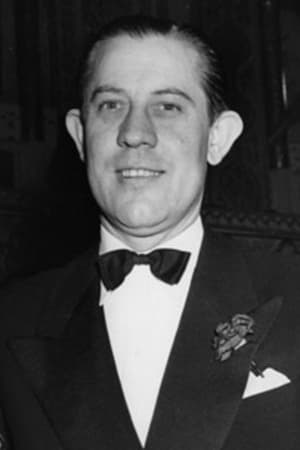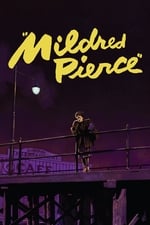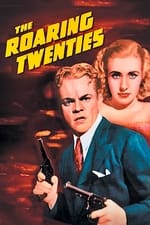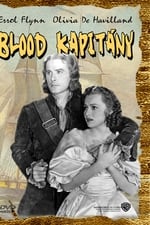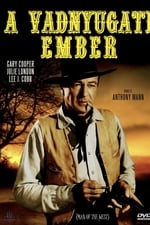Información personal
Conocido por Cámara
Créditos conocidos 139
Sexo Masculino
Fecha de nacimiento 31 de mayo de 1896
Fecha de defunción 21 de octubre de 1970 (74 años)
Lugar de nacimiento Los Angeles, California, USA
También conocido como
- Ernie Haller
- Ernest Jacob Haller
- Ernie J. Haller
- Ernest Hallor
- Ernie Hallor
Puntuación del contenido
100
¡Sí! ¡Buena pinta!
Iniciar sesión para informar de un problema
Biografía
Ernest Jacob Haller (May 31, 1896 – October 21, 1970) was an American cinematographer. He was most notable for his involvement in Gone with the Wind (1939) and his close professional relationships with prominent actresses of the time, such as Bette Davis, Joan Crawford, and Ingrid Bergman. Haller was nominated for Academy Awards a total of seven times and won for Best Cinematography once.
Haller began his career as a cinematographer as an assistant cameraman to D. W. Griffith’s great cameraman Billy Bitzer. He next moved to Warner Brothers. Some of Haller’s recognized works include Weary River (1928), Dawn Patrol (1930), The Rich Are Always with Us (1931)— a film where he first photographed Bette Davis—, The Emperor Jones (1933), and Dangerous (1935). In 1938, Haller received his first Academy Awards nomination for Best Cinematography for the film Jezebel. This recognition caught the eyes of David O. Selznick who was impressed with Haller's work in Jezebel enough to borrow him from the Warner Bros. to participate in Gone with the Wind (1939), which granted Haller his first and only Oscar for Best Cinematography. Haller had five more nominations for an Academy Award, for All This, and Heaven Too (1940), Mildred Pierce (1945), The Flame and the Arrow (1950), What Ever Happened to Baby Jane? (1962), and Lilies of the Field (1963).
Haller initially announced his retirement in 1965 but managed to briefly come out of it in July 1965 upon the request of director James Goldstone to film the second pilot of the Star Trek episode "Where No Man Has Gone Before".
He was killed in a car accident in Marina Del Rey, California, on October 21, 1970 at the age of 74.
Ernest Jacob Haller (May 31, 1896 – October 21, 1970) was an American cinematographer. He was most notable for his involvement in Gone with the Wind (1939) and his close professional relationships with prominent actresses of the time, such as Bette Davis, Joan Crawford, and Ingrid Bergman. Haller was nominated for Academy Awards a total of seven times and won for Best Cinematography once.
Haller began his career as a cinematographer as an assistant cameraman to D. W. Griffith’s great cameraman Billy Bitzer. He next moved to Warner Brothers. Some of Haller’s recognized works include Weary River (1928), Dawn Patrol (1930), The Rich Are Always with Us (1931)— a film where he first photographed Bette Davis—, The Emperor Jones (1933), and Dangerous (1935). In 1938, Haller received his first Academy Awards nomination for Best Cinematography for the film Jezebel. This recognition caught the eyes of David O. Selznick who was impressed with Haller's work in Jezebel enough to borrow him from the Warner Bros. to participate in Gone with the Wind (1939), which granted Haller his first and only Oscar for Best Cinematography. Haller had five more nominations for an Academy Award, for All This, and Heaven Too (1940), Mildred Pierce (1945), The Flame and the Arrow (1950), What Ever Happened to Baby Jane? (1962), and Lilies of the Field (1963).
Haller initially announced his retirement in 1965 but managed to briefly come out of it in July 1965 upon the request of director James Goldstone to film the second pilot of the Star Trek episode "Where No Man Has Gone Before".
He was killed in a car accident in Marina Del Rey, California, on October 21, 1970 at the age of 74.
Cámara
|
|||||||||||||||||||||||||||
|
|||||||||||||||||||||||||||
|
|||||||||||||||||||||||||||
|
|||||||||||||||||||||||||||
|
|||||||||||||||||||||||||||
|
|||||||||||||||||||||||||||
|
|||||||||||||||||||||||||||
|
|||||||||||||||||||||||||||
|
|||||||||||||||||||||||||||
|
|||||||||||||||||||||||||||
|
|||||||||||||||||||||||||||
|
|||||||||||||||||||||||||||
|
|||||||||||||||||||||||||||
|
|||||||||||||||||||||||||||
|
|||||||||||||||||||||||||||
|
|||||||||||||||||||||||||||
|
|||||||||||||||||||||||||||
|
|||||||||||||||||||||||||||
|
|||||||||||||||||||||||||||
|
|||||||||||||||||||||||||||
|
|||||||||||||||||||||||||||
|
|||||||||||||||||||||||||||
|
|||||||||||||||||||||||||||
|
|||||||||||||||||||||||||||
|
|||||||||||||||||||||||||||
|
|||||||||||||||||||||||||||
|
|||||||||||||||||||||||||||
|
|||||||||||||||||||||||||||
|
|||||||||||||||||||||||||||
|
|||||||||||||||||||||||||||
|
|||||||||||||||||||||||||||
|
|||||||||||||||||||||||||||
|
|||||||||||||||||||||||||||
|
|||||||||||||||||||||||||||
|
|||||||||||||||||||||||||||
|
|||||||||||||||||||||||||||
|
|||||||||||||||||||||||||||
|
|||||||||||||||||||||||||||
|
|||||||||||||||||||||||||||
|
|||||||||||||||||||||||||||
|
Equipo
|
|||
|
|||
|
|||
|
|||
|
|||
|
|||
|
|||
|
|||
|
Interpretación
|
